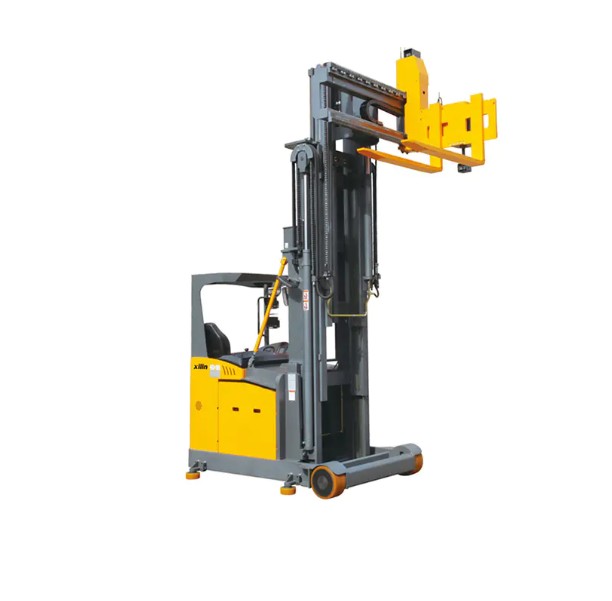Very Narrow Aisle (VNA) reach trucks are integral to the implementation of Lean manufacturing practices by offering a range of benefits that align with the core principles of efficiency, waste reduction, and optimal resource utilization.
One key contribution is in the realm of space optimization. VNA reach trucks operate in aisles that are significantly narrower than those required by conventional forklifts. This efficient use of space supports the Lean principle of minimizing unnecessary resource consumption.
Moreover, these reach trucks enable increased storage density. With their ability to access higher stacking levels, they reduce the need for expansive floor space. This aligns with Lean principles, which emphasize efficient resource utilization to eliminate waste.
The collaboration of VNA reach trucks with selective racking systems, such as narrow aisle racking, facilitates easy access to individual pallets. This promotes efficient material handling, reducing the likelihood of errors and supporting Lean objectives of minimizing defects.
The precision of VNA reach trucks in maneuvering within tight spaces leads to quick and accurate material handling. This efficiency minimizes unnecessary movements, contributing to the Lean goal of minimizing waste in operational processes.
Travel time is also reduced significantly with VNA reach trucks operating in narrow aisles. This efficiency aligns with Lean principles by minimizing non-value-added activities and optimizing workflow through reduced unnecessary motion.
The potential for forklift automation, seen in some VNA reach trucks, contributes to Lean manufacturing by reducing reliance on manual labor. Automation enhances precision, minimizing human error and supporting Lean practices that aim to optimize workflow and reduce inefficiencies.
Integrated technology, such as RFID, barcode scanning, and warehouse management systems, provides real-time data on inventory levels and order fulfillment. This data-driven approach supports Lean manufacturing through informed decision-making and continuous improvement.
Adaptability to changing demand is another notable feature of VNA reach trucks. Their efficient navigation and access capabilities allow for quick adjustments to inventory layouts in response to fluctuating market demands. This aligns with Lean principles of flexibility and responsiveness.
Furthermore, the specialized training required for operating VNA reach trucks emphasizes employee skill development. This investment in training supports Lean principles of continuous improvement and employee involvement.
VNA reach trucks contribute significantly to Lean manufacturing practices by optimizing space, increasing storage density, facilitating efficient material handling, reducing travel time, incorporating technology, adapting to changing demand, and emphasizing employee training. These collective contributions align with Lean objectives of minimizing waste, improving efficiency, and achieving operational excellence in manufacturing and distribution processes.











